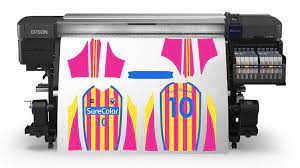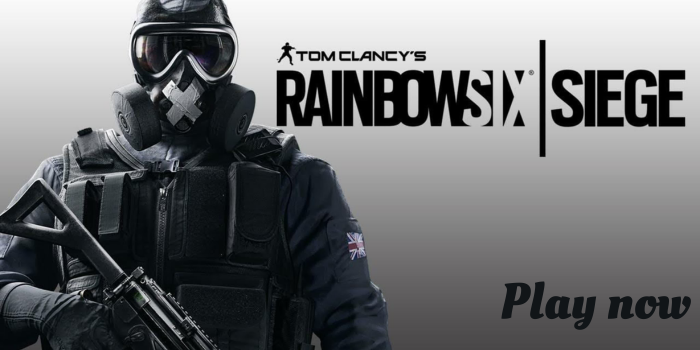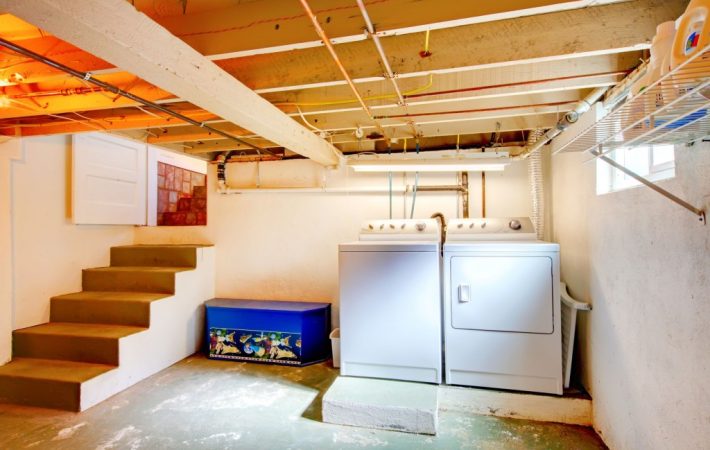The dye-sublimation printing market is undergoing substantial growth, driven by the increasing demand for high-quality prints across consumer goods, textiles, and personalized merchandise. Projected to grow at a CAGR of around 8.90% from 2024 to 2032, this market is set to thrive, primarily due to its reputation for producing vibrant, durable photographic results. The technology behind dye-sublimation printing, which involves using heat to transfer dye directly onto various materials, is gaining traction as industries seek visually appealing, long-lasting, and customizable solutions.
Key Benefits of Dye-Sublimation Printing
Dye-sublimation printing technology is preferred across numerous sectors for its high-quality outputs, making it suitable for both industrial and consumer applications. Key benefits include:
- High Durability and Color Quality: Dye-sublimation prints are resistant to fading, moisture, and UV light, ensuring long-lasting vibrancy, which is especially valuable for products exposed to outdoor elements.
- Photorealistic Output: This printing method provides a smooth, high-definition finish with vivid colors and detailed graphics, making it ideal for photographic and artistic applications.
- Eco-Friendly Process: Dye-sublimation minimizes waste and uses water-based dyes, making it an environmentally friendly option compared to traditional printing methods.
- Wide Range of Applications: From custom apparel to personalized home decor and signage, dye-sublimation is versatile, supporting a diverse array of consumer and industrial needs.
- Faster Production Times: With fewer steps and a digital design process, dye-sublimation offers efficient production, making it suitable for high-demand scenarios and customization at scale.
Industry Developments
Recent industry developments are enhancing the capabilities of dye-sublimation printing. Key players are expanding their portfolios to include eco-friendly inks, faster print speeds, and printers with higher resolution. Major companies are also investing in R&D to optimize dye-sublimation processes for textiles, plastics, and ceramics, broadening application areas. Innovations like AI-driven color accuracy and automated workflow integration are positioning dye-sublimation as a key technology in digital printing.
Driving Factors of the Market
Several factors are accelerating growth in the dye-sublimation printing market:
- Rise in Personalized Products: The growing trend of personalization has fueled demand for customizable apparel, home goods, and gifts, where dye-sublimation excels.
- Growth in the Textile Industry: Dye-sublimation is widely adopted in textiles, particularly for creating vibrant, detailed designs on fabrics, which are popular in fashion and sportswear.
- Increased Adoption in Electronics: Printed electronics, smartphone covers, and other tech accessories often rely on dye-sublimation to create visually appealing and durable designs.
- Demand for Eco-Friendly Solutions: With a lower environmental impact than conventional printing methods, dye-sublimation aligns with the shift toward sustainable manufacturing.
COVID-19 Impact on the Market
The pandemic initially disrupted supply chains and impacted demand in certain sectors, notably textiles and retail. However, as lockdowns increased consumer interest in e-commerce, there was a surge in demand for customized merchandise. Many companies transitioned to online personalization platforms, driving dye-sublimation printing for home decor, apparel, and gifts. Post-pandemic, the market is seeing renewed interest from industries like sportswear and fashion, which are rebounding as global supply chains stabilize.
Market Restraints
While the market shows strong growth potential, certain restraints pose challenges:
- High Initial Equipment Costs: The upfront cost of dye-sublimation printers can be a barrier, especially for smaller businesses.
- Material Limitations: Dye-sublimation is primarily suited for polyester and polymer-coated materials, limiting its application across other types of fabrics.
- Complex Color Management: Achieving precise color matching can be complex, especially for brands requiring exact color consistency across products.
Market Segmentation
The global dye-sublimation printing market can be segmented as follows:
- By Printer Type: Small format (for items like mugs and apparel) and large format (for signage, banners, and larger prints).
- By Application: Apparel and textiles, signage, home decor, and electronics.
- By End-User: Consumer goods, retail, advertising, and industrial sectors.
- By Region: North America, Europe, Asia-Pacific, Latin America, and the Middle East & Africa.
Market Outlook
The dye-sublimation printing market is expected to maintain strong growth due to the demand for vibrant, durable, and customizable prints. The Asia-Pacific region is anticipated to lead the market, primarily driven by its booming textile sector and growing interest in personalization. North America and Europe will likely continue as substantial markets due to their well-established advertising, apparel, and home decor industries. Technological advancements in dye-sublimation inks and printers are set to enhance productivity, quality, and eco-friendliness, further boosting market appeal.
Market Overview
Dye-sublimation printing is becoming a staple in the consumer goods, textiles, and advertising industries due to its ability to produce high-quality and durable prints. The market’s versatility allows it to cater to a wide range of needs, from personalized gifts to high-impact retail displays. Additionally, advancements in ink formulations and printer technology have made it easier for businesses to adopt dye-sublimation printing for high-volume production without sacrificing quality.
Key Trends in the Dye-Sublimation Printing Market
- Expansion in Sustainable Printing: The demand for eco-friendly production processes has led to the development of water-based and biodegradable dye-sublimation inks.
- Increased Use in Fashion and Sportswear: Fashion brands and sportswear companies use dye-sublimation for detailed, long-lasting prints that withstand washing and wear.
- Growth in E-commerce and Personalized Products: E-commerce platforms offering customizable items drive demand for dye-sublimation, making it ideal for the growing online personalization market.
- Technological Advancements in Printer Design: High-speed, large-format printers are being developed to increase production efficiency, catering to commercial-scale applications.
Industry Segmentation and Regional Analysis
The dye-sublimation printing market spans diverse applications, with the apparel and textile segments leading due to demand for high-quality, wearable prints. The signage and advertising sector also contributes significantly, utilizing dye-sublimation for eye-catching displays. Regionally, the Asia-Pacific market is experiencing the fastest growth due to an expanding textile industry and increased consumer spending on customized products. North America and Europe continue to dominate in high-quality consumer and industrial applications.
Recent News and Industry Analysis
Recent industry news highlights increasing investments in R&D and collaborations between printer manufacturers and material suppliers. For instance, several key players are launching eco-friendly inks that comply with environmental standards. The shift toward digitalization in advertising and a rise in direct-to-garment printing are further expanding the reach of dye-sublimation printing technology. As consumers continue to demand high-quality, customized products, companies are focused on enhancing printer speeds, color accuracy, and software integration.
Top Impacting Factors
- Rise of E-commerce Personalization: Online platforms promoting customized products, such as T-shirts, mugs, and phone cases, are creating demand for dye-sublimation printing.
- Technological Innovations: Improved printer technology and eco-friendly ink options increase adoption across industries.
- Consumer Demand for High-Quality Graphics: As customers seek vibrant, durable graphics, dye-sublimation printing stands out for its ability to produce photorealistic images.
Target Audience
The primary audience for dye-sublimation printing includes businesses in consumer goods, advertising, fashion, and electronics. Small businesses, print-on-demand services, and large-scale manufacturers also benefit from this technology, utilizing it to meet the growing demand for customized, high-quality printed products.
Sub-Category: Consumer Goods and Services – Electronics
Within the broader consumer goods sector, dye-sublimation printing plays a significant role in electronics, particularly in personalized phone cases, laptop skins, and tech accessories. The technology is suitable for printing on high-quality, durable surfaces that maintain clarity and vibrancy, making it popular among electronics manufacturers focused on personalization.
Major Key Players
Leading players in the global dye-sublimation printing market include:
- Epson America, Inc.
- Mimaki Engineering Co., Ltd.
- Sawgrass Technologies, Inc.
- Ricoh Company, Ltd.
- HP Inc.
- Roland DG Corporation
- Mutoh Holdings Co., Ltd.
- Canon Solutions America, Inc.
- Kornit Digital Ltd.
- Brother International Corporation
These companies are at the forefront of innovation, investing in advancements that include faster print speeds, enhanced ink formulations, and environmentally friendly solutions.
Opportunities
The dye-sublimation printing market offers several growth opportunities:
- Expansion in Home Decor: Customized home decor items, from wall art to furniture covers, provide a promising market for dye-sublimation.
- Growth in Sustainable Solutions: Eco-conscious consumers drive demand for environmentally friendly inks and biodegradable substrates.
- Increased Adoption in Fashion and Sportswear: The demand for detailed, long-lasting prints in activewear offers potential for further market growth.
Challenges
Despite the positive outlook, the market faces challenges:
- Material Limitations: The need for polyester-based materials limits dye-sublimation applications, particularly in industries requiring non-synthetic substrates.
- Initial Setup Costs: The high cost of professional dye-sublimation equipment can be a barrier for smaller businesses.
- Maintenance Requirements: Dye-sublimation printers require regular maintenance to ensure consistent print quality, which can be labor-intensive.
Restraints
- High Initial Investment: Quality dye-sublimation printers and inks can be costly, limiting access for smaller companies and startups.
- Competition from Digital Printing Alternatives: Competing technologies may appeal to industries needing flexibility across a wider range of materials.
Scope
The dye-sublimation market scope continues to broaden, with applications in textiles, home decor, and consumer goods. Emerging segments, such as wearable technology and direct-to-garment printing, highlight the versatility of dye-sublimation as a long-term industry solution.
The global dye-sublimation printing market is positioned for robust growth, fueled by demand for high-quality, durable, and personalized prints across multiple sectors. With an expected CAGR of 8.90% from 2024 to 2032, this market’s expansion reflects the increasing preference for visually appealing, sustainable, and customizable solutions. Major players are investing in technological advancements and environmentally friendly options, paving the way for dye-sublimation to remain a key component in the digital printing landscape.







Leave a comment
Your email address will not be published. Required fields are marked *